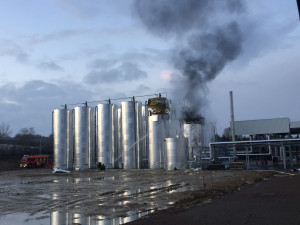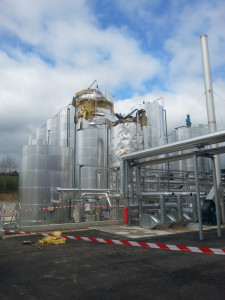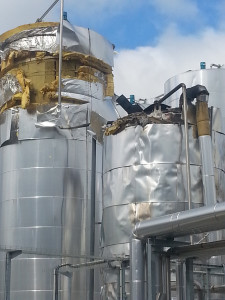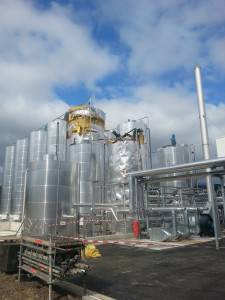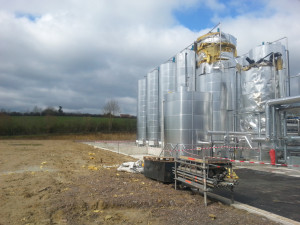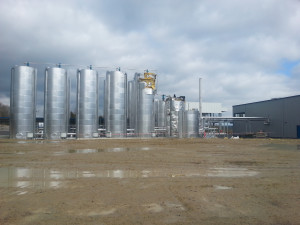At 4:50 p.m., an explosion was followed by a fire in a company manufacturing bituminous road paving products. The equipment involved was a 50 m³ soaker containing less than 300 kg of bitumen residues. The rescue services were called at 5:10 p.m., the site was evacuated and the electricity disconnected. Thick black smoke was released with flames shooting up over 1 m. The emergency services cooled down the burning tank with a remote spray nozzle and monitored the second soaker, which was likely to explode. A foam sprayer was used to fill the tank. The fire was put out at 8:20 p.m. The firemen then filled the tank with water. The damage was limited to the soaker (cracked tank, threatening to rupture) as and the insulation of a neighbouring tank which was partially blown away by the explosion. The extinguishing water remained confined to the retaining basin and was pumped out by a specialised company.
The plant was being started, although no production was in progress. To calibrate the temperature probes in light of a CE marking audit that was scheduled for 9-10/03, the temperature of the soakers had to be raised to 160 °C. The procedure for safely heating the soakers prevents heating if no product is present. This is why the heating was set up manual “forced operation” mode. Before performing this action, the technicians consulted the manufacturer of the tanks. The manufacturer strongly discouraged this action for the following reasons:
- heating an empty tank is dangerous;
- the forced operating mode excludes all heating safety devices;
- the non-production conditions are not suitable for CE marking tests.
The inspection was postponed to 9/03 during a subsequent manufacturing test. Despite this, all the heating stages of the soakers were turned on, and then the soaker exploded after 5.5 hours of continuous heating. The system did detect that the authorised thresholds had been exceeded, and an alert message was displayed on the screen. But in forced mode, automatic actions are not possible. None of the technicians admitted turning on the tank heating (voluntary activation of each heating stage in the control room, i.e. 8 manual actions). The probes and thermometers in the facility were not monitored while heating took place over a 5.5-hour period. This event highlights the lack of training at the site.
During its on-site inspection, the installation authorities for Classified Facilities told the operator that the installation could only be put back into service after:
- a complete audit of the control system;
- a test of the ventilation system;
- presentation of the material safety data sheets of the mixtures in the tanks;
- updating of the resulting operating instructions.
The operator checked the proper operation of the components involved and proposed additional measures to ensure safety when restarting the system.



